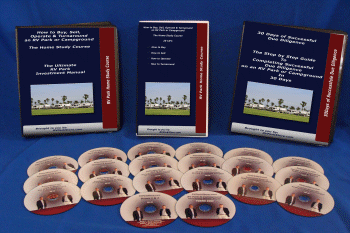In 2009, sales of RVs plunged from 353,400 units down to only 165,700 units. This year, sales were a respectable 277,300 units, another 10% increase from 2011, and 100,000 units more than 2009 levels. With the price of gasoline also declining significantly, the RV industry has started to recover nicely. However, the new RV industry will be a little different, and all RV park owners should be aware of the shifts.
Less expensive “towable” RVs have led the recovery
90% of all new RVs sold in the U.S. are “towable” – pulled behind a vehicle. These units cost between $8,000 and $100,000, with an average price of $32,000. That’s compared to the stand-alone motor homes, which are self-propelled and cost between $55,000 and $1 million, which now have a declining market share. Even Winnebago, which had abandoned the “towable” market, has added a new line of these models to their motor home selection, and their profits have tripled as a result. The bottom line is that the new RV buyers are trying to lower their costs, and are not as willing to spend large sums. These same customers are looking for a great value, so RV parks that offer reasonable rates and a good “deal” will flourish more than those RV parks that offered amenities at a higher price. In addition, these units being sold are smaller and will fit in smaller lots, so many lots that were becoming unusable for the giant motor homes may be put back into service with the lower-cost “towable” models
The focus continues to be on “destination” RV parks and not “overnight” RV parks—but may shift
Since the new RV customers are spending less on their units, and pulling them by car or truck, they are getting better mileage. In addition, the price of gas has declined. This may lead to the return of RV customers travelling more. In recent years, most RV customers would try to minimize gas cost by driving to just one destination and staying there, rather than driving around to various sites. During this period, “overnight” RV parks – often stopover points along the highway – lost traffic as people simply did not drive around as much. Traffic climbed at “destination” RV parks, which offered a ton of amenities and awesome locations. Many of these type of parks literally became full and had to turn customers away. However, the trend may be for RV users to take advantage of lower gas cost and better mileage, and start using their RVs to see more of America, not less. This would be good news for those destination RV parks that have suffered.
The 800 pound gorilla is still the baby boom
The best news for the RV park industry, which has led to the recovery, is something that the RV industry has nothing to do with. And that’s the fact that roughly 10,000 Americans are retiring each day. This phenomenon, which has long been anticipated by the “baby boom” after World War II, is finally here. And that means that 10,000 folks a day are ready to start enjoying their retirement years, many by utilizing an RV. This giant demand is going to cause RV sales to soar, as well as the occupancy in RV parks to skyrocket.
And don’t forget about the weather
Whether it’s caused by “global warming” or some other factor, there is no doubt that average temperatures in the U.S. are climbing. And this is a good thing for RV park owners. In the northern part of the U.S., the end of the RV season was normally the arrival of winter. With more mild winters, the RV season can be extended. This will also allow northern RV customers who want to travel south to do so later and more often. Overall, there is nothing but benefits to RV park owners from this weather phenomenon.
Conclusion
We are predicting a much better 2013 for the RV industry than 2012 – and 2012 was a really good year. It’s often been said that it’s “better to be lucky than smart”, and the RV park industry is getting the opportunity to enjoy this luck between the baby boom, lower gas prices and warmer weather.

